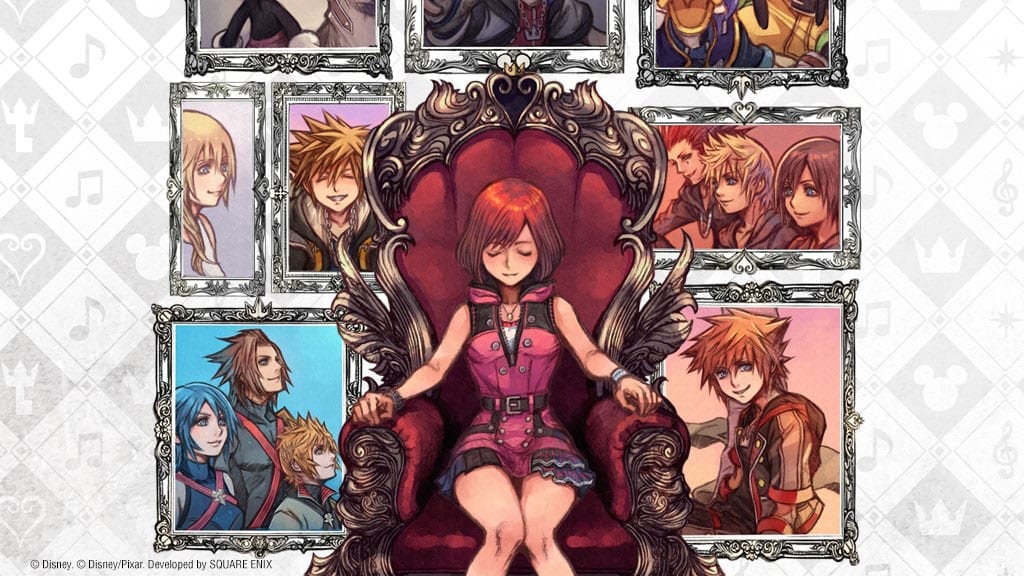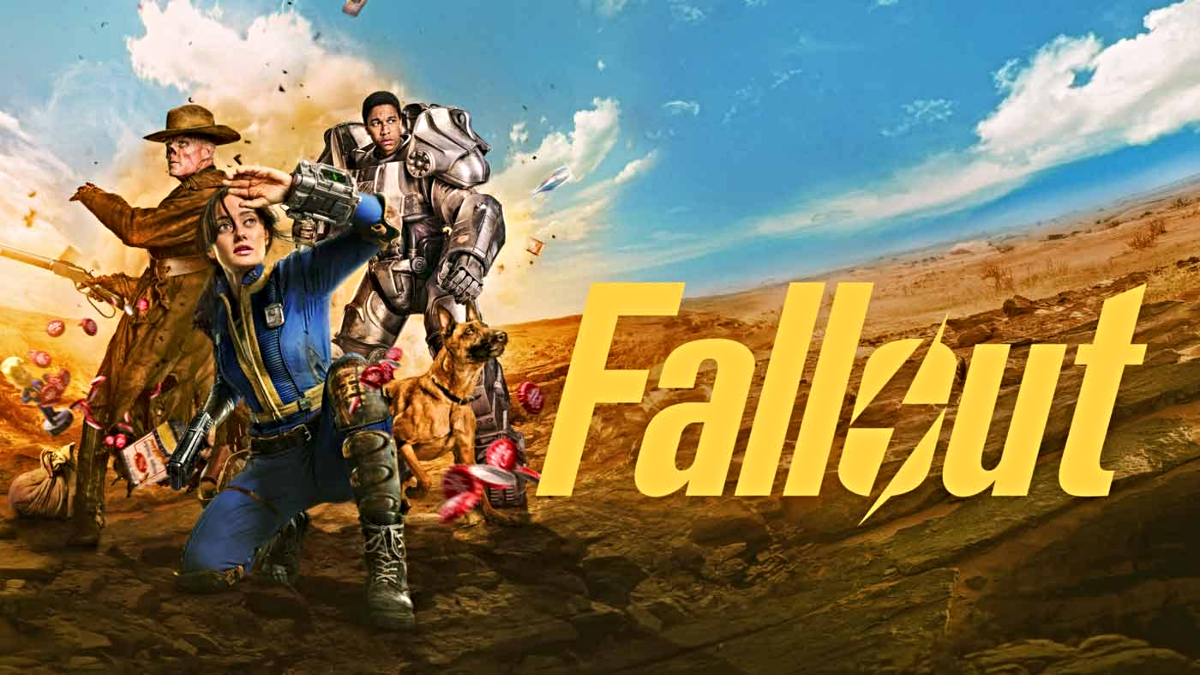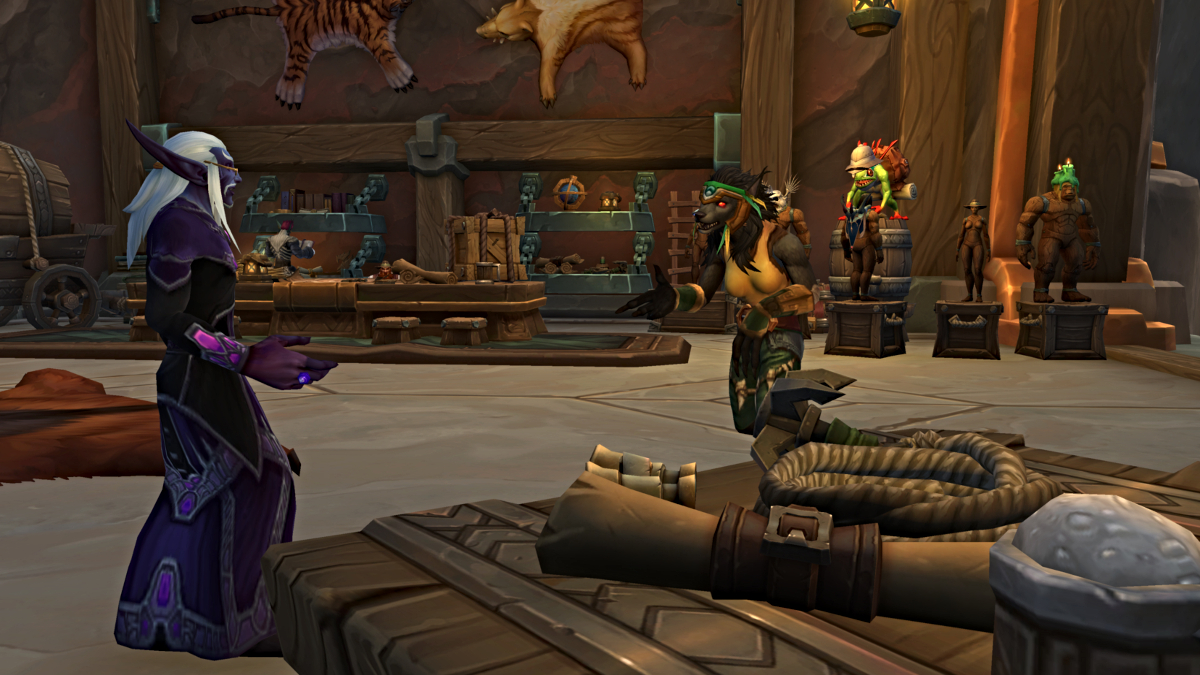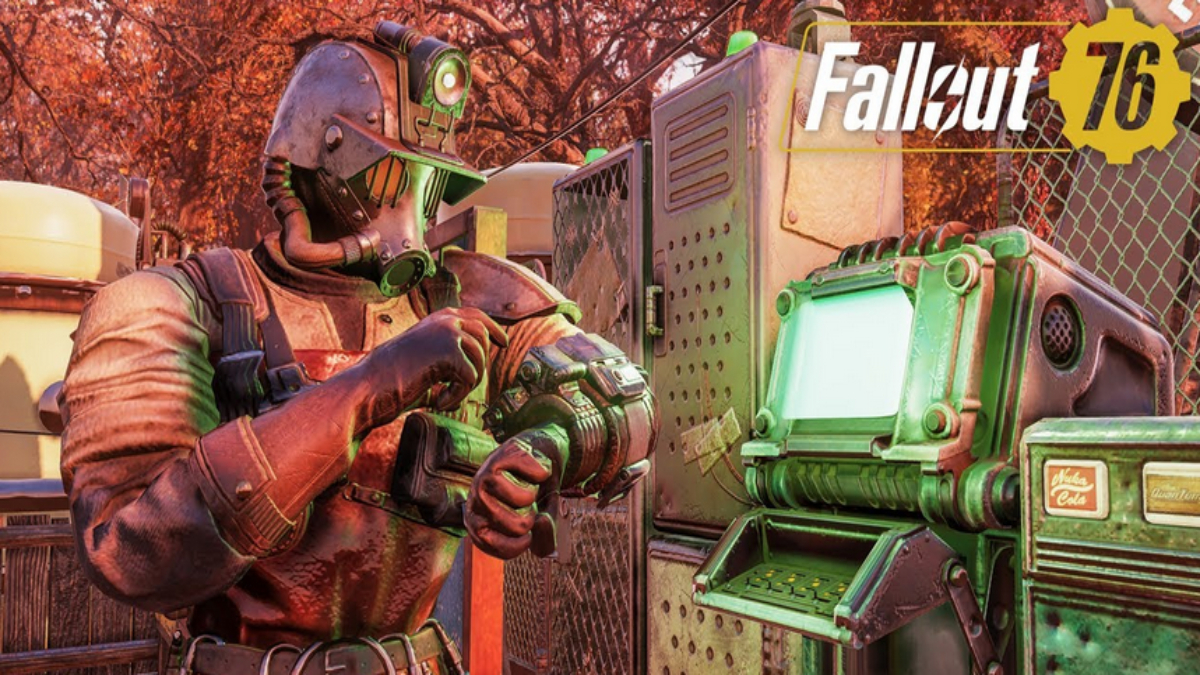Kingdom Hearts: Melody of Memory walks an interesting line for the Kingdom Hearts franchise, and not just because it tackles a new genre of gameplay.
In addition to being the first title in the series designed as a rhythm action experience, and the first where Kairi provides her perspective on key events, the game is also the first to follow up the Dark Seeker Saga, an arc that spanned 18 years and the vast majority of the series’ entries.
It comes at a time when new fans finally have a chance to see everything that came before with better clarity, and old fans are eager to know what comes next for the prolific franchise.
We recently had a chance to speak with franchise director and character designer Tetsuya Nomura, producer Ichiro Hazama and co-director Masanobu Suzui about how they’ve tackled this challenge, and what fans new and old can expect from the title.
Keenan McCall: What inspired the creation of Melody of Memory? Was it an idea that the team had been contemplating for a while now, or was it a more recent idea that had come up?
Ichiro Hazama: The main concept of it was floating around since about five years ago when Mr. Suzui and I were talking about how ‘Oh, wouldn’t it be really cool to do a Theatrhythm with Kingdom Hearts?’ We were talking about it, but time passed and (the concept) kind of went away.
It took form when we started to talk about it again and Mr. Nomura joined the conversation. Then the discussion went on further about “Well, we want to make this a Kingdom Hearts title. How do we make it Kingdom Hearts?” That’s when the project kicked off and development for it started in earnest.
Keenan McCall: How has it taken shape as a Kingdom Hearts rhythm game versus a Theatrhythm Final Fantasy game? Is it taking notes from Theatrhythm, or is it striving to have its own feel and style?
Masanobu Suzui: So in the end, we tried to go for something that is completely different. When we first started the project, when we thought about what makes Kingdom Hearts unique, it had to be that 3D element.
So with Melody of Memory, we didn’t go with the stylized characters you may see in a Theatrhythm game. You’re actually seeing Sora in the game, and the action is going to be just as exhilarating as some of the mainline titles. That was our starting point. We took that as our central core and idea.
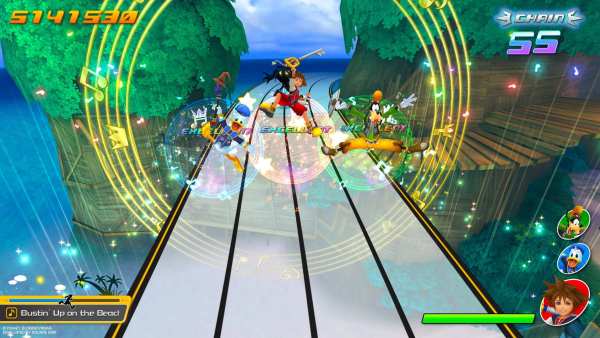
Plus, we recently celebrated [the series’] 15th anniversary. There was a jukebox music site that was dedicated to it, and the key visual there was a great inspiration as to the style we wanted to pursue.
Of course, with the developers, we do have the knowledge and the know-how we have garnered through the development of the Theatrhythm games and the technical aspects of the games. But we wanted to take that know-how and combine it with the excitement and the emotional aspects of the music of Kingdom Hearts.
There may be some similarities with that sort of general Theatrhythm vibe, but we did want to make this unique to Kingdom Hearts, and how we do show it off as a unique Kingdom Hearts title.
Keenan McCall: What are some of the tracks you guys had the most fun designing for? What are some favorites you’re most excited for players to see?
Masanobu Suzui: Of course, every song to all of the staff members are fantastic songs. We’re all players of the series, and we have our own affinity to each of the different songs. Each stage is created with the love and passion that we all have for any Kingdom Hearts game.
There are so many members on the development team who are fans of the Kingdom Hearts series, and each person comes in saying ‘I want to do this song’. They have those really strong feelings toward not just the song selection, but how we’re placing the enemies within the stage, or the backgrounds that are being utilized, and say ‘We’ve got to include this particular memorable scene.’
Even the structure of how these stages are put together was a great deal of the discussions that were had amongst the team members. So we know that everybody’s passions have gone into the creation of the different stages.
I particularly like “Vector to the Heavens,” a very well-known fan-favorite by Yoko Shimomura. It’s a very poignant, melancholy almost, song, and when the enemies appear in time with the music — and you react in time with the enemies popping up on the screen — it brings even more excitement to the stage.
Ichiro Hazama: My favorite would be “Under the Sea.” It has a really nice rhythm, a nice tempo, and it has become a fan-favorite in Kingdom Hearts. It’s also very representative of some of the Disney songs we’re featuring within the game as well. And it’s such an iconic song.
Tetsuya Nomura: My favorite is “Simple and Clean.” Of course, you can’t describe Kingdom Hearts without that famous song by Hikaru Utada.
Keenan McCall: Could you tell me a little more about the gameplay? As you said, it’s going to have that same feel of a standard Kingdom Hearts game, but with a rhythm game framework. How are you guys executing that and bringing it to fruition?
Masanobu Suzui: With Kingdom Hearts, one of the unique characteristics is that stylish action and very exhilarating gameplay. Melody of Memory’s controls are very action-oriented, and this applies not just to Sora, but to all of the different characters you would have in your party and as your allies.
Trying to translate that into a Rhythm action so to speak was a bit of a challenge, so we thought about it from two different perspectives. The first of which is the motion or animation of Sora and the different characters. We looked at the action RPG side of how Sora is being animated and then how we required action to be incorporated in a Rhythm game. There are differences when we’re considering that.
So looking at how we’re animating our character, and controlling the length of how long it takes for a character to make a movement, was something we had to do a bit of trial and error with to make sure it made sense in a rhythm game.
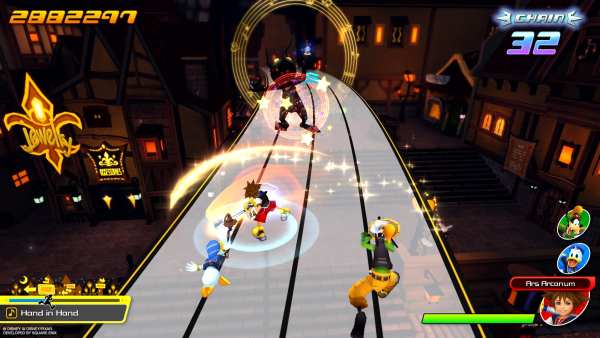
For example, when you’re trying to hit a button, you want that reaction right away so that you’re hitting your enemy in tempo with the song. So we had to go through different experiments and we took an animation technique where we’re adjusting the key-frame, so that you have one key frame and then in the next one you have that responsive hit.
I feel like that was a really good technique we implemented to give that impression of combat that looks very much like a mainline Kingdom Hearts game, but still is able to be utilized as a mechanic of a Rhythm game.
The second point was the number of people in your party as you’re playing the different stages in Melody of Memory. We have three people in your party as you play each of the stages because depending on the song, sometimes you have to hit as many as six different enemies within a frame of one second because the song progresses in that tempo.
If you only had one character there, it would be very frantic, so we decided having additional characters there on the side made sense in that aspect.
Keenan McCall: How will the multiplayer modes work? Could you give a brief overview of them?
Masanobu Suzui: With multiplayer, one of the versions is an online versus mode where you’re going in there by yourself and then you’re pitted against another player, and you’re battling it out in one of the songs. You’re trying to get in the way of the other player so that you can succeed and try to get the higher score, and climb the ranks that way.
Then, there’s a feature that is specific to the Nintendo Switch which we call the friend battle royale, where you are playing adhock between two-to-eight players and you’re all battling it out on one song. You can decide what the rule is going to be: If you make one mistake, you’re kicked out, or two mistakes or three mistakes. You set the rule, and then if you fail you drop out.
There’s also the double play mode, which is basically your couch co-op. You’re sharing the screen and you’ve got your player one and player two and you’re playing the song together. For example, player one is Sora and Player two is Riku. You try to cooperate and try to get as high of a score as possible.
These all become available, and more songs are added to your roster, as you play through the main campaign, which is known as the World Tour.
Keenan McCall: How will Melody of Memory drive the Kingdom Hearts series forward? How do the scenes with Kairi hinted at in the trailer tie into the larger Kingdom Hearts series?
Masanobu Suzui: I’m sure people got really excited after seeing that trailer, and there is that excitement toward what’s coming next. But the main concept of Melody of Memory is to revisit the entire arc, what we were calling the Dark Seeker Saga; so from all of the previous Kingdom Hearts titles plus the most recent ReMind.
Melody of Memory summarizes it and revisits the different elements within that arc.
But we do recognize the fans, the really passionate fans out there. We are going to be incorporating just a little bit of new content. It might not be as substantial as something you might see in a mainline title, but we do want to provide a glimpse into what’s coming ahead and what goes on beyond what happens in ReMind.
Tetsuya Nomura: With Kairi, her youth and her childhood hasn’t really been depicted and it’s still very much shrouded in mystery. So with Melody of Memory being very focused on this concept of memory, we’re hoping to touch on that a little bit.
In terms of the narrative, the overarching story that has led up to Kingdom Hearts 3 has come to a closure for that particular segment of the saga. So with any sort of story element, we’re going to now start looking to the future, and hopefully with this we can provide a little bit of a glimpse of what’s to come ahead.

Keenan McCall: What do you hope fans will get out of Melody of Memory? Do you hope that old fans will be able to reflect on the Dark Seeker Saga? Do you want newer fans to get a glimpse at the series as a whole?
Masanobu Suzui: In Melody of Memory, we have over 140 songs in the game, and all of these songs are wonderful pieces that colored the series throughout. For those people who are playing a Kingdom Hearts game for the first time, we’re hoping that they’ll be very surprised by just how many great songs are in the game, and we feel that it is going to be a great entry point, having people introduced to so many great songs.
For me, working on this title and coming into contact with these songs once again — and not just the songs, but the different artistic elements too, like the backgrounds and the characters that are used — it does give you that sense, a condensed feeling, of experiencing all these different Kingdom Hearts games in a short amount of time.
We’re hoping that new players will be able to see and get a glimpse of the various titles included in Melody of Memory, and hope that it will lead them to play these individual titles and get interested in the series.
For the fans of the Kingdom Hearts series, and those people that have played all of the games and have a good knowledge of the narrative — and a lot of the development team members were like these fans, so we’re hoping we all have a similar reaction — we put in a lot of attention to detail.
If you look at some of the background elements, there are some interesting things that we have done just to give respect to the original source. You can see that throughout various points in the game.
Plus, Mr. Nomura has provided us with script material, scenario material, and some of it is new to us. It did bring us to tears, and it was very emotional, so we’re hoping that will be relayed to players as a surprise element.
Having these different memorable scenes throughout the Kingdom Hearts franchise with Kairi’s narration, looking back at the different titles leading up to Kingdom Hearts III and maybe getting a little bit of a glimpse beyond that; I hope that the fans will enjoy that element.
Also, once you’ve finished the game and unlocked all the songs, this is a Rhythm action game, so you can go back and play the music again and again, in whatever order you please.
Keenan McCall: Is there anything any of you would like to add?
Masanobu Suzui: For those who are going to be playing Melody of Memory, there may be people who might not have played Kingdom Hearts at all. You might be somebody who really likes Rhythm action games or maybe you’re not very good at it at all. Some of you may just really love music. Some of you might just be a Disney fan.
There are so many different elements in Melody of Memory, and we are trying to cater to these many different play styles as well. For those who aren’t as comfortable having all these complicated button movements, we have the One Button feature where it’s a lot more simplified. Or, if you’re a hardcore Rhythm action afficionado, you can go into the Performance mode where it’s a bit more challenging.
We’re hoping that Melody of Memory will serve as a way to jump into Kingdom Hearts, and that a lot of players will take interest.
Tetsuya Nomura: Leading up to Kingdom Hearts III, all of the story was connected, and we have been depicting this saga for a fairly extended period of time. That may have caused new players or newcomers to join in on the Kingdom Hearts franchise, but it might have been a challenge for some of the newer players to get into the series.
But with Kingdom Hearts III bringing closure to the Saga, Melody of Memory summarizes what we have been depicting throughout the series. Plus, we’re looking into the future a little bit. We’re hoping we can expand our reach, that more players will get interested in the Kingdom Hearts series and franchise.
That’s one reason why we wanted to have this game on multiple different platforms, including the Switch which was newly added to our available platforms for a Kingdom Hearts title. The language support is something we’re trying to expand upon as well. With this, we’re hoping that Melody of Memory will be one of many titles with which we are making the attempt to broaden our reach and reach more people.

